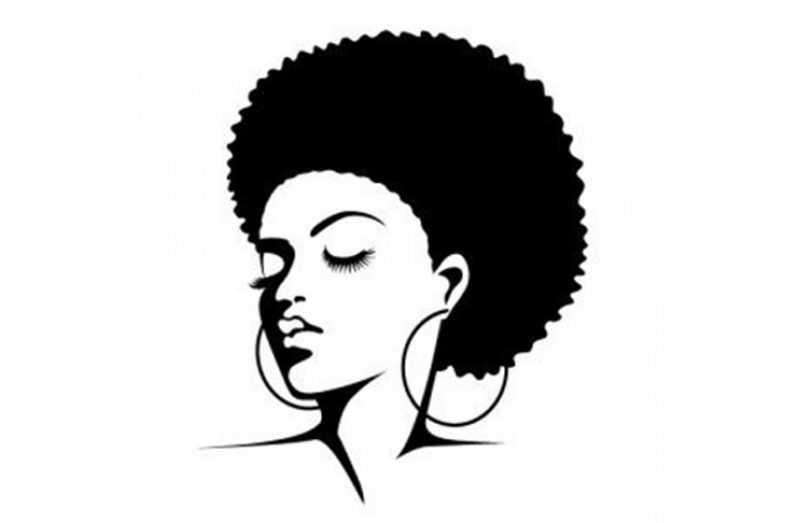I HAVE always wondered about it; about what African hair really is like. But more recently, I have become increasingly befuddled about what is the true texture to look for.
It all goes back to a single photo I saw when a small child, of my grandmother, seated in a rocking-chair, dressed in what must have been lavish contemporary style, and proudly displaying a corn-cob pipe between her thin lips.
Hers were very angular features. Between the light and shadow of what would have been a portrait taken as far back as the late 19th Century was hair, the length of which fell behind her neck and overflowed ont her shoulders.
As if instructed, her identified husband stood erectly alongside ans slightly behind her high-backed chair, in formal apparel, his dark features, like hers, not quite fitting with the puzzling well-combed hair parted on the left side.
When, years later, I was able to have a conversation with her son, my father, he assured me that he grew up hearing them speak mostly ‘an African dialect’. He could not recall the country of origin; nor could he say at what ages was the memory of their elegance captured in print. What he proclaimed, rather innocently, however, was that his parents had ‘wiry hair’.
Years later, when I had become more observant, I noticed that my dad’s own hair grew short and stiff, perhaps even ‘wiry’.
But to rewind to my own childhood days, there still hangs on my bedroom wall a portrait of me standing on a chair in a uniform-style suit, with my hair stretching behind my head in two unadorned, longish plaits so distinctive that people would keep mistaking my picture for that of a girl.
It wasn’t until I was two years old that my father took me to the barbershop in Regent Street, close to the north-eastern corner with Camp Street, where the barber, Walter Flatts, sheared my plaits. He remained my barber for years after, until he died. Interestingly, however, he kept his own dark hair groomed, with some sort of treatment that made it ‘wavy’, and parted almost exactly in the middle. It occurred to me later that his might have been an attempt to disguise his legitimate ‘Africaness’.
Out of all this muddle, what I have never been able to comprehend was my father’s keeping my two sheared, non-wiry ‘locks’ locked in a shoe box, where they lasted, intact, for two more years, with little sign of deterioration. Dad seemed to know when to get rid of the package. I could never understand the reason for this attempted preservation, and moreso, account for the timespan that untreated ‘African’ hair lasted.
Since then I have gone through the ‘Vaseline’ phase, then the ‘Pantene’ phase, as well as phases of non-treatment; perhaps, on looking back, reflective on periods of ebbs and flows of uncertainties about my identity.
Today, too many decades after, my barber of more recent years is told to crop what’s left of my grey, receding hair as closely as possible, moving forward towards the forehead, to cover, however partially, the inevitable baldness.
But these reflections are really larger than about me. Rather, they are about the authenticity of identity; of who we are. That is if first we concede our ‘Africaness’.
As I look through my window, daily I see the heads of ‘African’ women adorned with hair too obviously synthetic to reflect their equally obvious ‘blackness’, if you will.
But one understands. They, who are unable to distinguish or discriminate, feel compelled to follow the patters with which they are pervasively bombarded, by local media, moreso by TV images.
For today, in vaunted Afro-American USA, the portrayal is not of one, but of a myriad of hairstyles (if that is the right descriptor) that are irreconcilable with ‘Africaness’ (or is it ‘Afro-ness’?).
Entertainers, housewives, ‘Voice’ judge, all seem to be enmeshed in a contrivance of personalities, away from the substance of an authentic persona. It is they who ‘head’ the confusion of mimicry indulged by those who by-pass my window.
So that when I see these mothers impose this mimicry on the children they send to school, I can only wonder where this profound shallowness will lead, and how it would impact on the adult psyche of the future.
Come to think of it, the indiscipline inherent in self begins at the tenderest school age, encouraged by adoring and indiscriminating mothers. Somehow, too, the fathers don’t seem to mind, even about the difference between thgeir own practised baldness and contrastingly natural beards, and that of their sons’ extended masculine ‘locks’, which, conflictingly enough, are intended to speak genuinely, but again to a mimicked identity.
So, what is it that all this eloquent confusion says? Where do we begin the search for an image that reflects an authentic identity, with our heads in such a chaotic state (or perhaps the sand)? Does the answer lie with the beautician or the barber? But again, how equipped are they to show us any true reflection of our deeper selves?
Right now, the only ‘headmistress’ know is the one who has restored the natural crown of one of my colleagues to its ‘Africaness’.
But, having said that, the heads of tghe women of Dalgety’s African Moods hardly reflect who they really should be. Their hair might straightened, but certainly not ‘wiry’!




.png)









